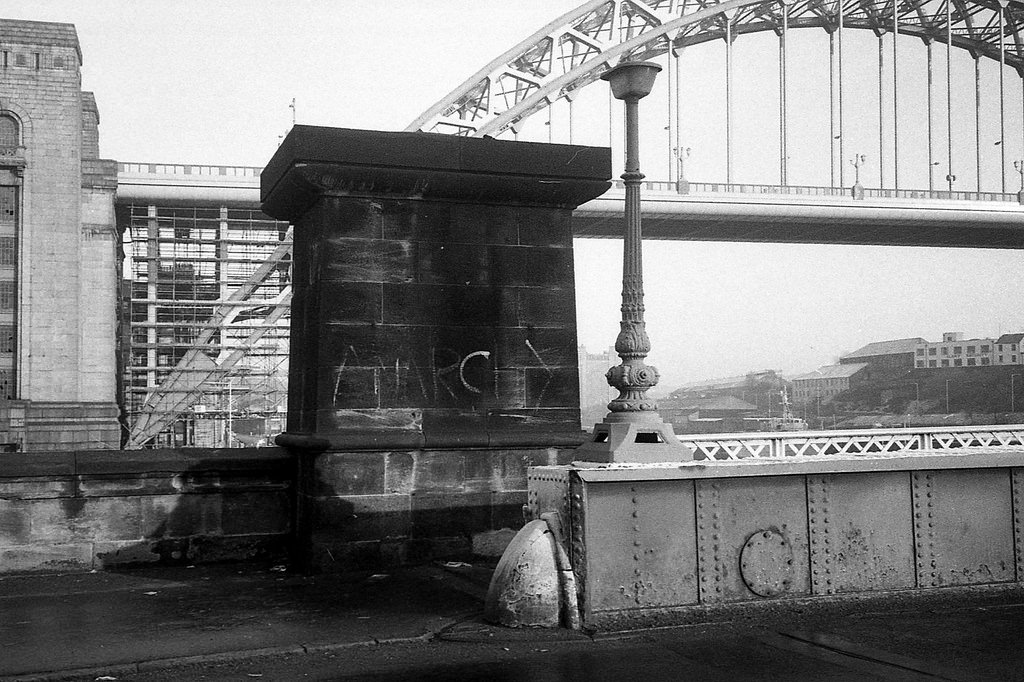We have searched in vain for decades for any hint of the whereabouts of Tom Browns unpublished memoirs, to no avail. They were loaned to a local student to use parts for her thesis, and apparently, after Toms death, his partner Lillian Brown wasnt interested in their return.
“Tom Brown, whose writings did much to revive interest in Syndicalism
and Workers’ Control, was that rare phenomenon in the British libertarian
movement, a theoretician whose ideas had been tested and developed by
his own experience in the hard school or working-class struggle.
An able and persuasive public speaker, whether at Speakers’ Corner in
Hyde Park, at indoor meetings, or in the more intimate role of lecturer, he
had the happy knack of relating what he said to the everyday experience of
his audience. The same quality illuminated his writings, which mirrored the
life and times or this lifelong revolutionary and loyal comrade.
Born and bred within sight and sound of the Tyneside shipyards, Tom
served his engineering apprenticeship there and was quickly drawn into militant
industrial activity. Much of his working life was spent as an active shop
steward and factory floor activist.
Like many others he was fired with enthusiasm by the Russian
Revolution, was an early member of the Communist Party and, for a time,
became its industrial organiser for the North East. But the double dealing of
the CP and the growing repression in Bolshevik Russia quickly brought disillusion
and he left the party, though never his natural role as a shop floor
militant.
Moving south during the Depression, he worked in the motor industry of
the West Midlands and, probably around this time, was attracted by
Anarchist and Syndicalist ideas. In the mid-thirties he and his wife, Lily,
found their way further south to London with their daughters, Ruth and
Grace.
The Spanish Revolution of 1936, with its takeover of industry and agriculture
by the Syndicalist unions of the CNT in anti-fascist territory, especially
Catalonia, reinforced and developed Tom’s own ideas and he became
a member of the grouping around the paper, ‘Spain and the World’, which
was dedicated to supporting the Spanish workers. He spoke at meetings
supporting their struggle, several times sharing the platform with Emma
Goldman. His Syndicalist writings appeared for the first time in ‘Revolt’, which followed ‘Spain and the World’ after Franco’s fascist victory in 1939.
During the war, as a member of the Anarchist Federation of Britain
(AFB), he wrote regularly for ‘War Commentary for Anarchism’ and produced
his first two pamphlets, ‘Trade Unionism or Syndicalism’ and ‘The
British General Strike’, both of which had wide sales. He remained a member
of the editorial board until near the end of the war, when the AH, of which
he stayed an active member, parted company with Freedom Press in
unhappy circumstances, but on points of principle.
With others, he helped launch ‘Direct Action’ in 1945, as the AFB’s new
voice and continued his close association with it for well over 20 years.
Saddened by the failure of an attempt to form an International of Anarchist
Federations in the late 1940s, he later supported the AFB’s decision to
change its name to Syndicalist Workers’ Federation (SWF) and affiliate to
the International Working Men’s Association, of which the CNT was the
strongest member, although then underground in Spain. The SWF maintained
friendly contacts with the IWW in the States and Tom visited them
when he and Lily crossed the Atlantic to see their daughters, who had both
married GIs in London and later emigrated. He also went to see the veteran
anarcho-syndicalist, Rudolf Rocker, in a libertarian colony near New
York. Tom and Lily returned to London after a year and he resumed his
SWF activity. He and Lily, who was then in poor health, returned to Tyneside
in the late 1960s and his continued activity there included several lively contributions,
on libertarian subjects, on local radio.
Tom Brown’s activity and writings influenced and inspired many people.
A latter-day Tom Mann, he sowed the seeds of a rebirth for Syndicalism in
Britain.”
We have plenty of literature which we shall show in future posts, but for now, check out the following copy of Direct Action, and its ‘school for syndicalism’ article by Tom Brown, which sheds a bit light on his early years…. page 5 …..


Reblogged this on Anarchy by the Sea!.
LikeLike
HI, TYNESIDERS – I’ve just read your interesting biography of Tom Brown on your site. Not only a well written, but a good piece of research on an activist who evidently well deserves his place in history. However, I was puzzled by these words, ‘when the AH, of which he [Tom] stayed an active member, parted company with Freedom Press’. Possibly I’m being obtuse, but I can’t think what the AH is; and his membership of this doesn’t seem to be mentioned elsewhere in the article? Is it a typo for AFB? Could you elucidate. Again, do you have Brown’s birth and death dates? Trust that you can find a moment to come back to me on this. Thanks in advance, and much appreciation of your presence on the net. Best, DIX
LikeLiked by 1 person
Hi, should be AF as you rightly state. The rough dates are 1900-1974, and as a further note of interest, iam now convinced that Tom Brown wasnt his real name
LikeLike